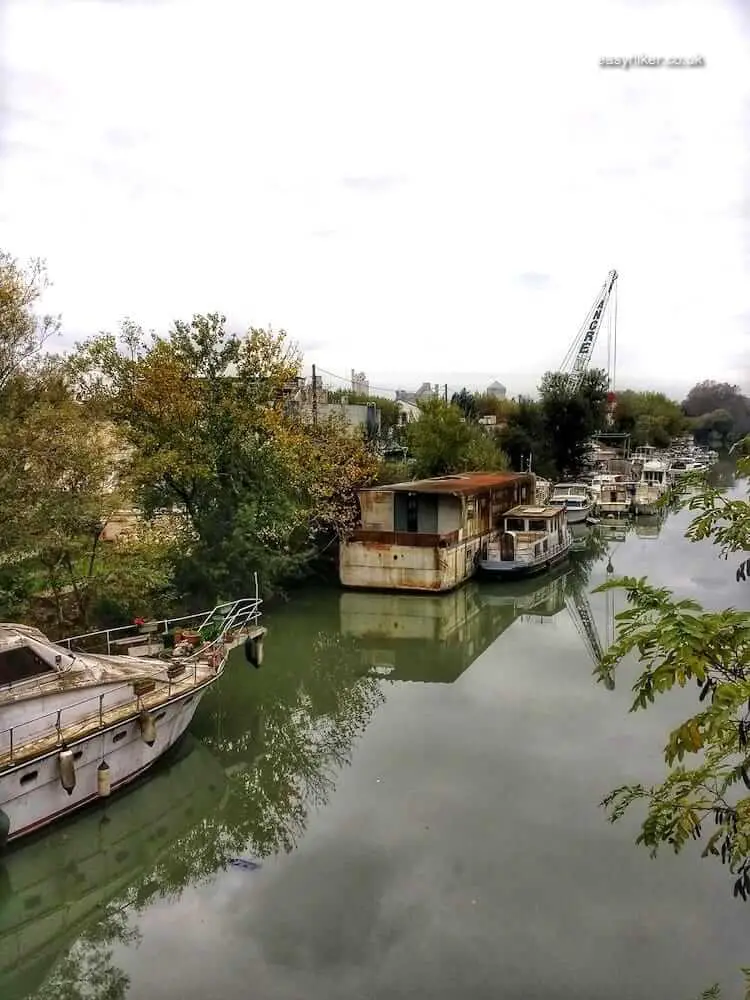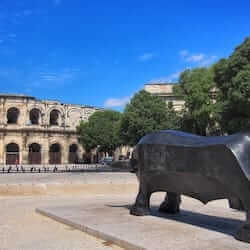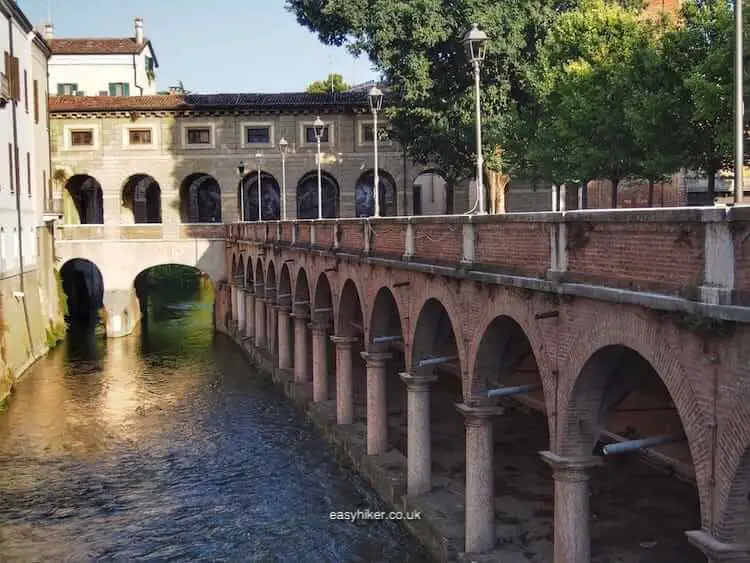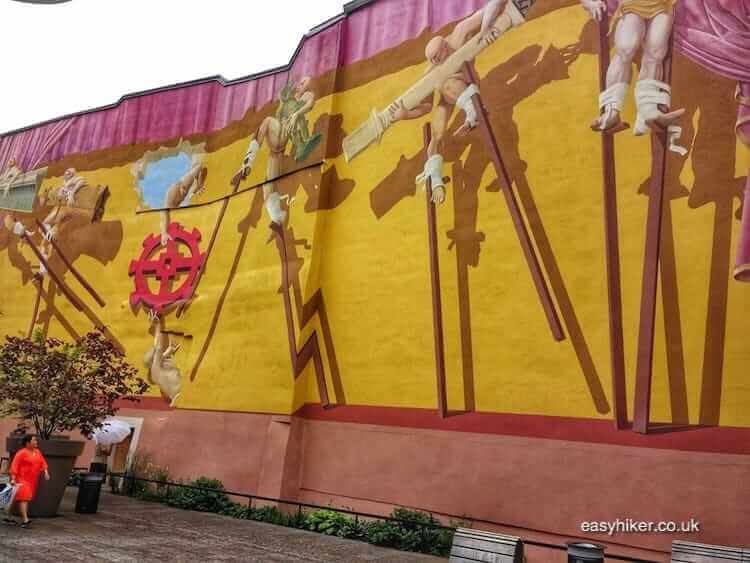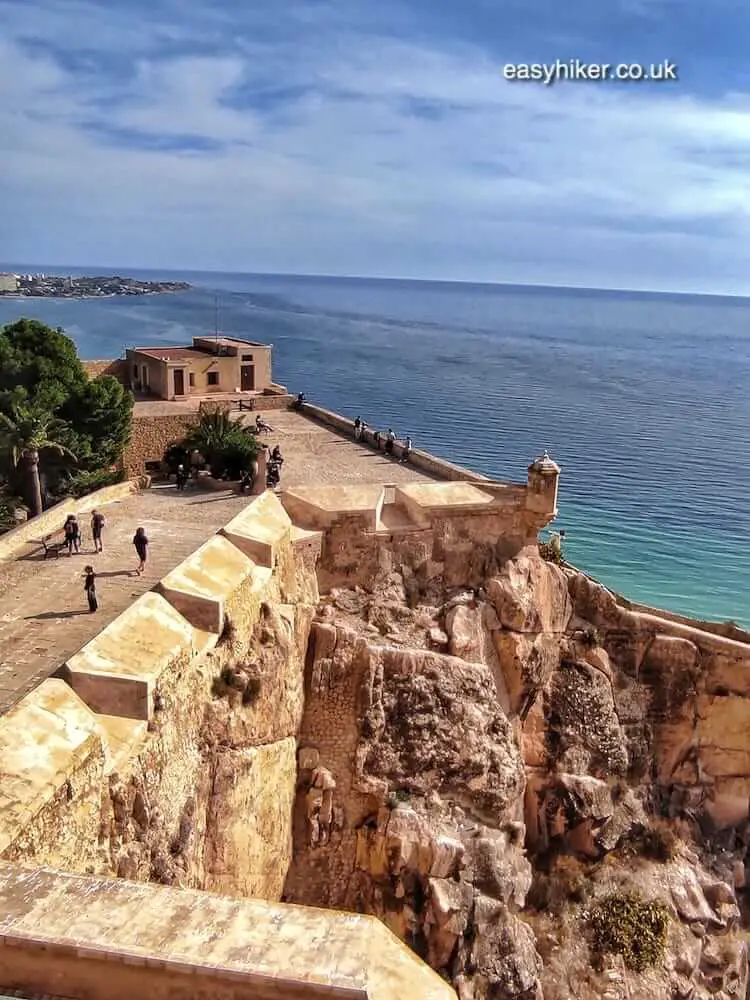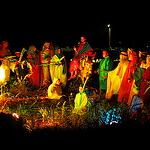There are two reasons to travel to the town of Beaucaire.
Firstly, there is the experience of walking across a border: not a national but a cultural border, one that has divided France into tribes of different customs and habits for centuries. Up to a point, it still does so today.
Take the train to Tarascon (a brief 10- minute hop from Avignon) and then cross the Rhone on the Pont de Beaucaire.
The Rhone is half a kilometre wide at this point, and what you initially see when stepping on to the bridge is not the right bank of the river but a slim strip of land in its middle called the Isle du Comté – 10 km long and rarely more than 50 meters wide – which divides the mighty stream neatly in two almost evenly wide halves.
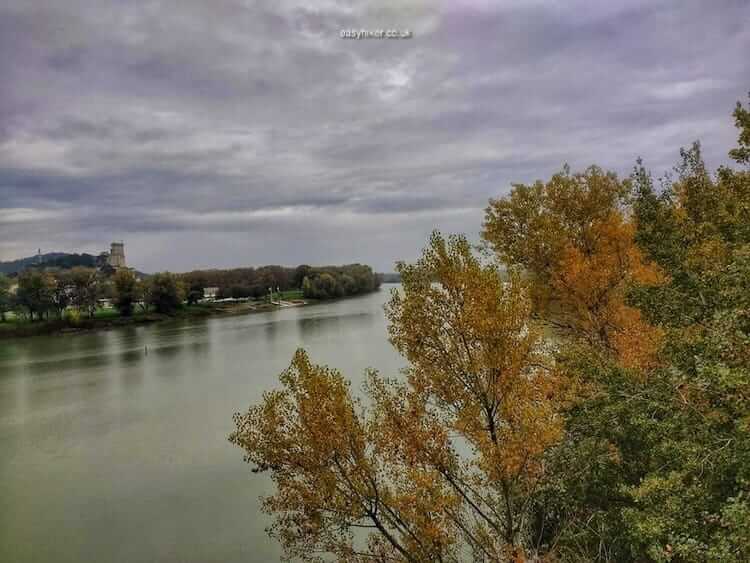
In this part of the country, the Rhone marks the border between two regions, Provence in the east and Occitanie in the west, but this frontier is much more than an administrative line.
East of the Rhone lie the papal palaces of Avignon and the beaches of the Riviera, to the west the Atlantic and the Pyrenees.
And where the east has traditionally been under strong cultural influences from Italy, the west has tended to look towards Castille and Catalonia. In the summer, they are staging proper bullfights in Beaucaire – in what may very well be the world’s northernmost purpose-built bullring.
In the modern world, this divide has clearly lost much of its former significance. While one can easily imagine armies of rival medieval warlords camped on opposite banks of the mighty river, nervously eyeing each other, today’s tribes on either side of the Rhone no longer aim crossbows at their opposite numbers.
The ancient animosity, however, seems not to have disappeared without a trace. One of the greatest banes in the lives of today’s Beaucairois – judging from their comments on various online message boards – appears to be the pungent smell of Tarascon’s cellulose factory that wafts across the river when the conditions are right (or wrong, presumably depending on your side of the divide).
One cannot help wondering: would the citizens of Beaucaire be quite as troubled if that factory was one of their own?
The historic rivalry between Provence and Occitanie is summarized in the image of two ancient castles facing each other: on the left bank of the Rhone sits the 15th century Tarascon Castle (the architectural twin of the Bastille.
If you want to know what royal France’s most notorious prison looked like, you are invited to take a closer look), …

… and, on the opposite side, the Chateau de Beaucaire. This building is the second reason why the town is worth your while.

Beaucaire Castle was constructed in the 11th century (the original Chateau de Tarascon was created at the same time but destroyed in 1399 and rebuilt soon after).
For hundreds of years, the fortress stood at the centre of power struggles between local warlords, of feuds between regional aristocrats and the crown, sometimes between Catholics and Protestants, at other times between different factions and orders of the Catholic Church.
Throughout this period, the castle was famous for being extremely hard to conquer, even by medieval standards, and for the ease with which it could be defended by a small number of troops against much larger armies.
This was the reason why Cardinal Richelieu ordered it to be razed in 1632. Even in today’s ruined state, Beaucaire castle packs a mighty punch and can send a shiver up your spine.
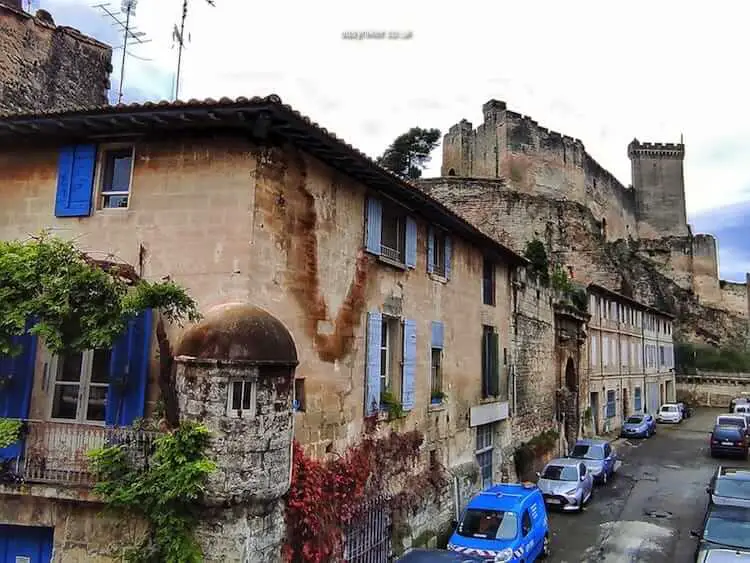
Three things make Beaucaire Castle stand out among all the other castles in France: firstly, its triangular keep, which is unique not only in the country but in the entire world.
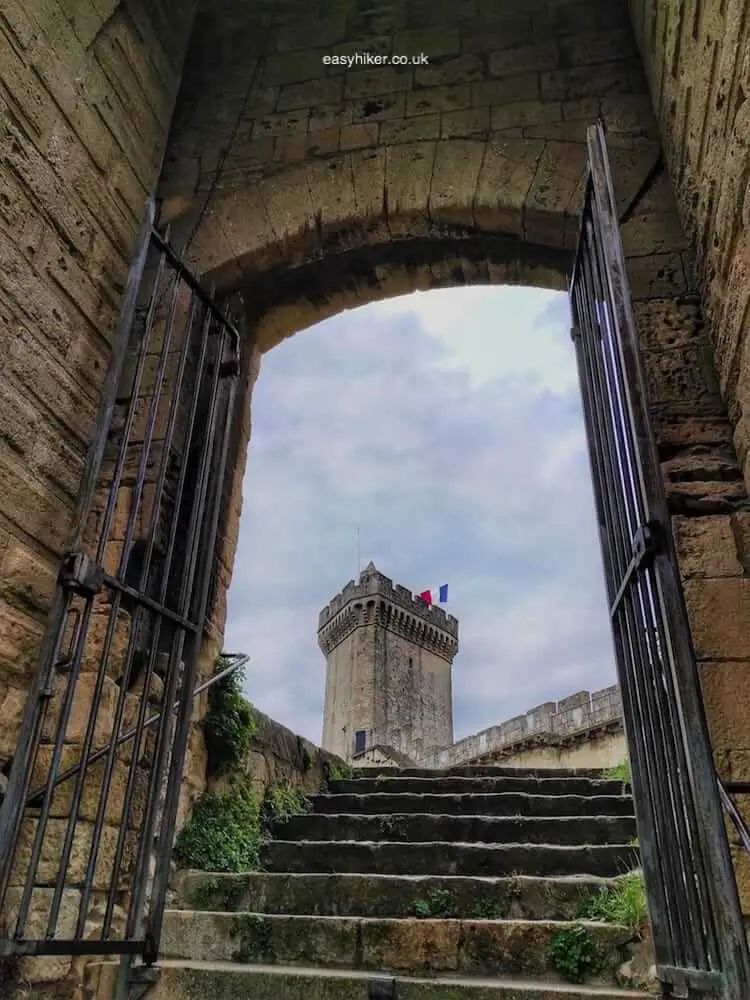
The fortress also allows us to peek into the past as it really was. Nobody has fiddled with it for centuries: no reinforcements were added to update the medieval fortifications for the challenges posed by the ages of gun powder and precision artillery, nobody modified the remaining building fabric in an attempt to turn it into a comfy aristocratic residence or anything else – such as a military prison, for example, which was the fate suffered by Tarascon Castle in the 18th century.
Beaucaire Castle is and has remained an authentic piece of the late Middle Ages, …
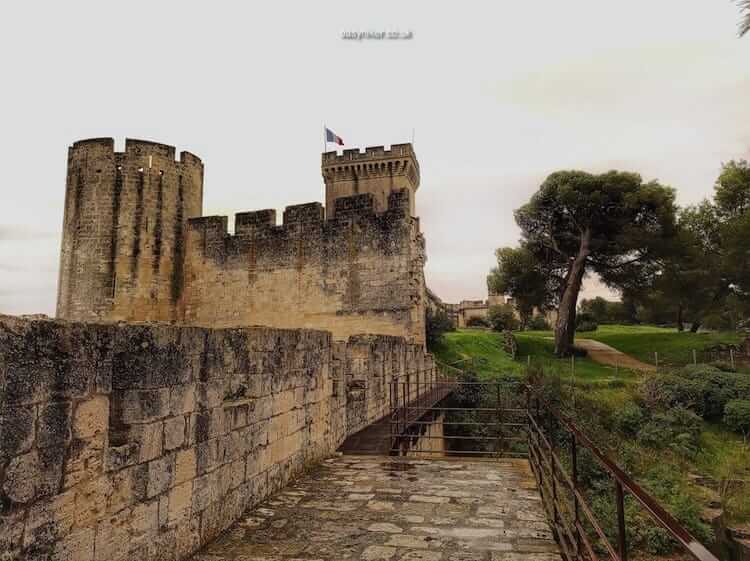
… even if little has survived of the interior structures, and the visitor’s imagination has to fill in the gaps.

And finally, for easy hikers the castle offers many opportunities for a pleasant stroll. You can freely roam around the grounds, explore the site and climb the ramparts to enjoy scenic views over town …

… and country.

Once you have completed your visit, it is time to have a look at the surrounding town. You may no longer be in Provence, but while the Rhone served as a powerful barrier to foreign invasions, cultural influences from the neighbouring region were, so it seems, much harder to keep out.
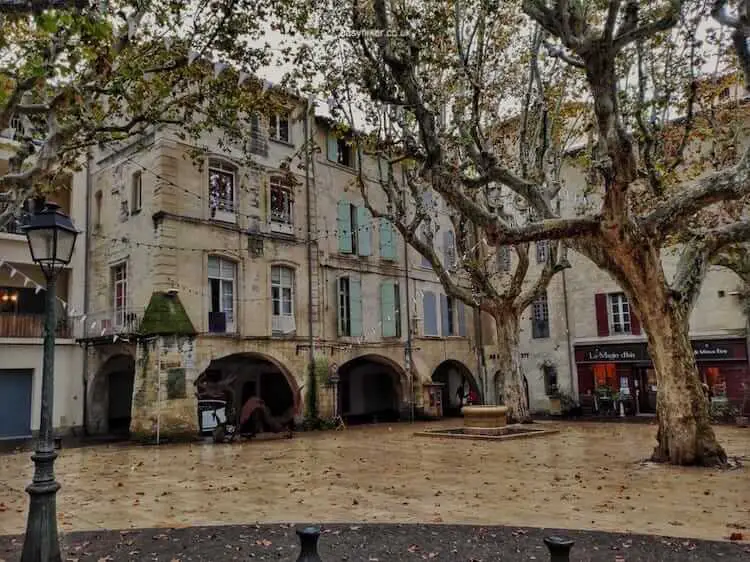
The sights of Beaucaire also include a church that carries the slogan of the French Revolution (the inscription was apparently added in the early 19th century, although I have found no explanation why the Catholic Church felt obliged to declare allegiance to the ideals of its sworn enemy) …

… and a large number of all kinds of National Monuments scattered across the town. This listed archway, for example, is something we found in a residential quarter at the edge of the historical centre.
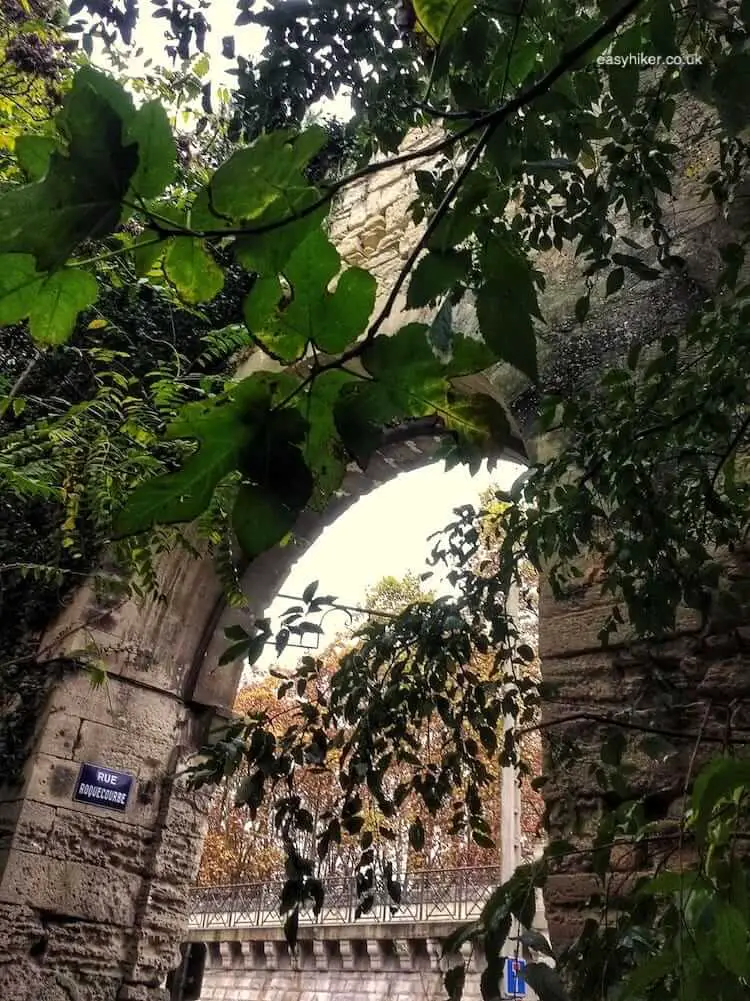
All these National Monuments owe their existence to the economic boom experienced by Beaucaire for 200 years, the period from the mid 17th century to the arrival of the railways during which the town hosted the largest market in France and provided the nationwide hub for the trade in Mediterranean goods.
More recent times, however, have been far less kind to the town. It probably did not help that we visited on a rainy day late in the autumn, but it seemed to us that the decline of river and canal shipping – Beaucaire’s traditional livelihoods – has filled the town’s streets with a mournful and melancholy atmosphere.
Efforts to brighten up the mood only serve to demonstrate the limitations of such a strategy.

If Beaucaire wants to lift the gloom, a more promising approach would focus on the canal harbour, which is the first thing that all visitors see when coming from Tarascon.
Since the Beaucaire branch of the Rhone-Sete Canal is a dead end and no longer connected to the river, it is useless for commercial shipping and slowly turning into a hospice for stricken canal barges.
Given a second life as a scenic leisure boat marina, lined by shops and restaurants, this harbour could become a must-see attraction for the many tourists in the area: a crucial third reason for visiting Beaucaire.
All good things come in threes, after all.
